Archive Section
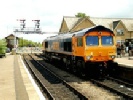



Friday 10th May 2019
© Photos & Text Tom Chaffin
The day before the AGM 2019 on the Keighley & Worth Valley Railway, a visit was arranged to the Ravenglass & Eskdale Railway in Cumbria. The Ravenglass & Eskdale Railway, also known as the Ratty, is a 15 inch (381mm) narrow gauge line which runs the 7 miles from Ravenglass on the Cumbrian Coast to Dalegarth near Boot at the foot of the mountains.
The line was opened in 1875 as a 3 foot (914mm) line to transport hematite iron ore from mines around Boot. Passenger traffic commenced a year later. Unfortunately the mines all closed within ten years of the line opening and despite the increasing trade the line did not receive enough income to be viable and closed completely in 1913.
The line was then purchased by two model makers, Wenman Joseph Bassett-
The railway uses a Radio Control Train Order signalling system with radio communications used between trains and Ravenglass signalbox, outside of Ravenglass station limits. At each passing loop and at Dalegarth, with a unique reporting number for each service. At the reporting locations, the drivers’ inform the signaler hat they are within the loop and clear of the single track section each side ready for another train to use the line they have vacated. Once ready to deport, the driver will request authorisation to run onto the next section of single line ahead. Conventional semaphore signals are used in and around Ravenglass station.
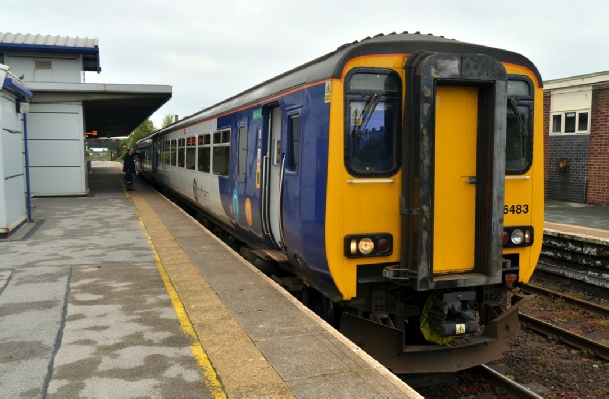
Travel from Barrow-
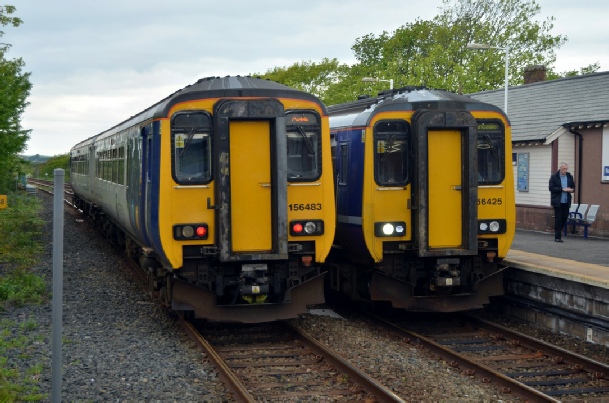
We alighted at Ravenglass. As our train departed, the 2C50 11.07 Carlisle to Lancaster arrived on the opposite platform, formed of 156 425, still with conventional ‘blind’ destination blinds rather than the LED display on 156 483. Northern has 47 Class 156s DMUs in total.
It was a short walk from the Ravenglass National Rail station to the Ravenglass & Eskdale Railway station. After a tour round the workshop, our guide gave us a tour of the museum.
This is 0-
It then left Ravenglass in 1919 when it went to Southport then Fairbourne. It was then dismantled in 1929 and the remains were displayed in the Narrow Gauge Museum in Tywyn.
In 1992 the Ravenglass & Eskdale Railway Heritage Group raised funds to restore the locomotive to original condition, which was finished in 2017
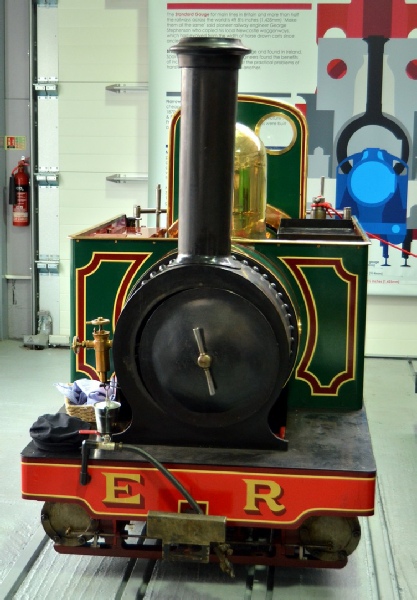
W.J. Bassett – Lowke engines Little Giant on the left and Synolda on the right.
Little Giant was the first 15 inch gauge Atlantic designed by Henry Greenly and was built by Bassett-
Synolda was also designed by Henry Greenly and was the first 15 inch gauge locomotive to run on the railway. This 4-
After the Ravenglass line was regauged it ran pleasure park lines at Southend and Manchester Belle Vue from 1942. The engine was rescued from a closed zoo in 1978 and restored for use on the Ravenglass & Eskdale by apprentices of British Nuclear Fuels.
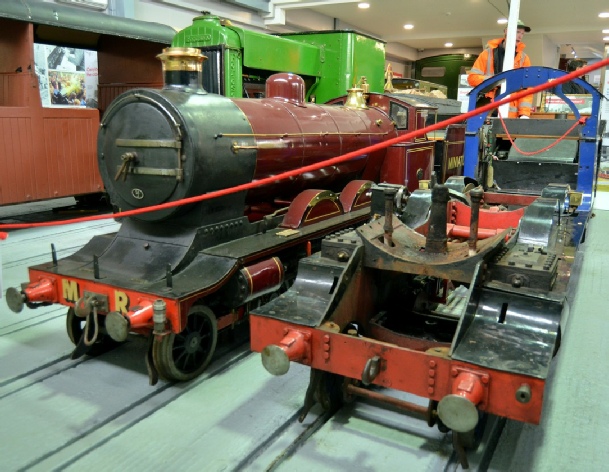
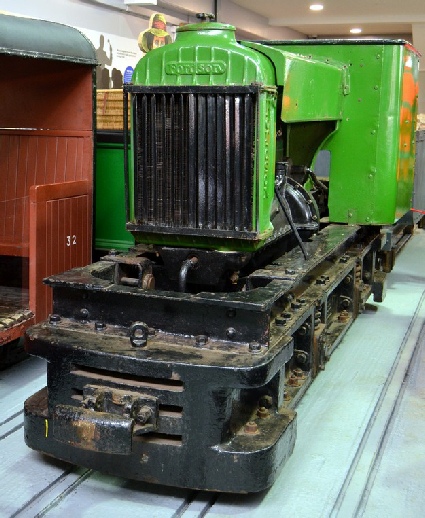
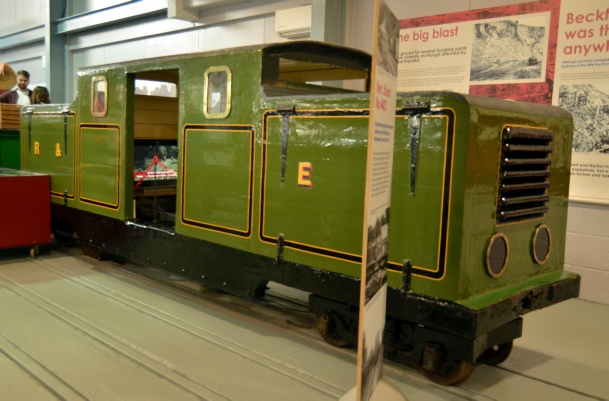
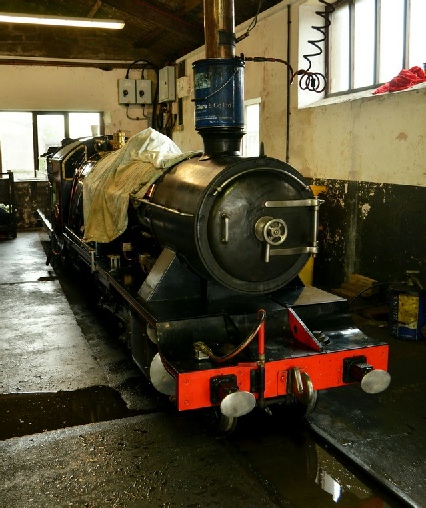
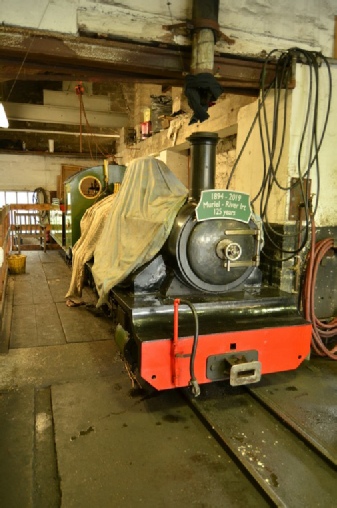
Quarryman, built in 1927.
Quarryman was originally built by Muir-
This engine is an early example of narrow-
No 1 Bunny, which was originally built in 1922 with a Ford Model T engine.
It was later rebuilt after a collision. In rebuilt form it holds the record for the fastest recorded end-
Bunny was withdrawn in 1959. It was restored to original condition with a Model T engine in the 1990s by preservation society volunteers.
Our guide then gave us a very informative tour around the engine shed.
2-
The loco is in black livery lined to the London and North Western Railway
Also in the engine shed was 0-
Parts of the engine date from 1894 locomotive Muriel. This was extensively rebuilt in 1927.
River Irt received a further rebuilt in 1972 when the cab was raised with the boiler then replaced in 1977.
Whilst not the most powerful on the line, this engine has a reputation for being very sure-
Whilst undertaking the shed tour, 2-
Northern Rock was based on Romney, Hythe & Dymchurch Railway no. 2, Northern Chief and was completed in 1976.
The engine has travelled as far away as Dresden to publicise the railway.
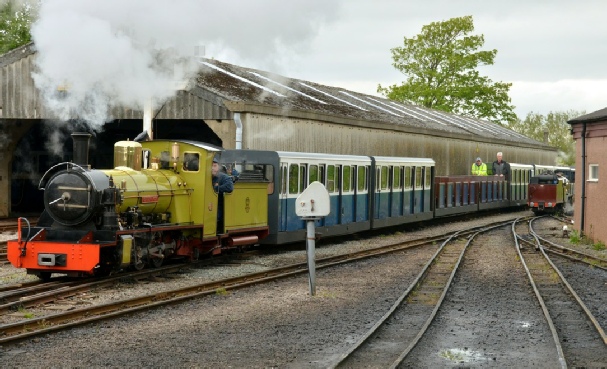
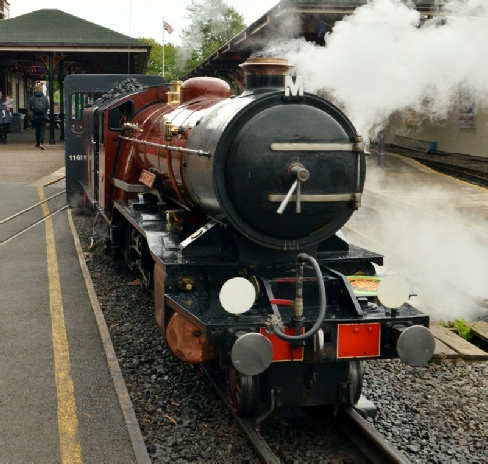
The engine for ‘our’ train, the 13.50 from Ravenglass to Dalegarth was 2-
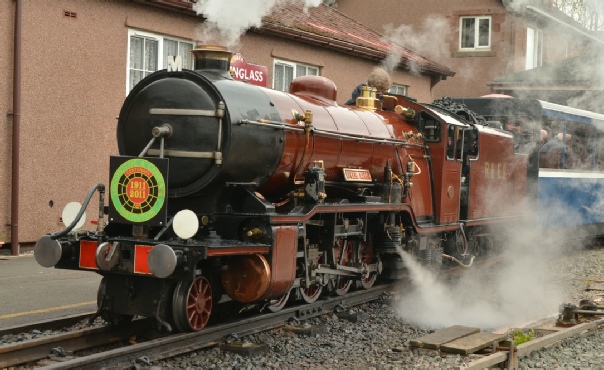
The L&CI 1911-
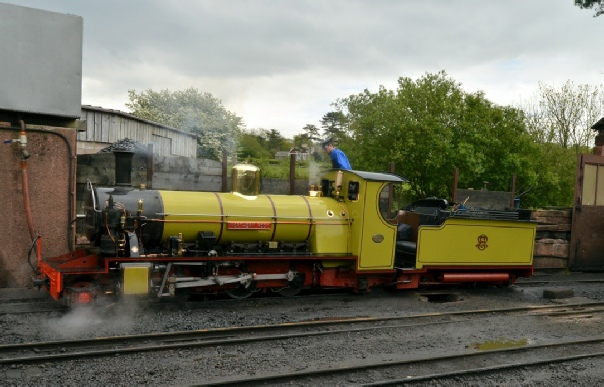
As we left Ravenglass, we passed No 10 Northern Rock being watered. This construction of this engine was sponsored by the Northern Rock Building Society, hence the name
Upon arrival back in Ravenglass, River Mitre was uncoupled from the train and ran onto the turntable to be turned round before running round its train.
The L&CI 1911-
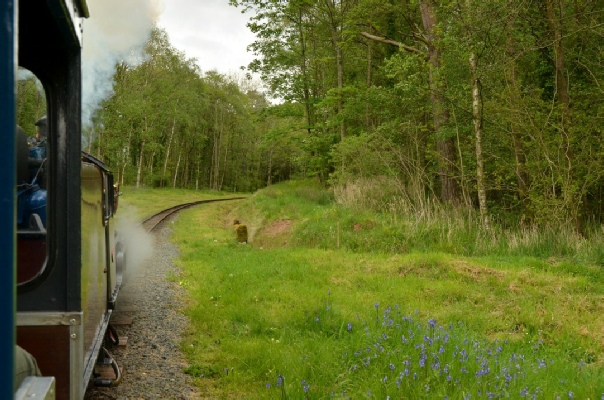
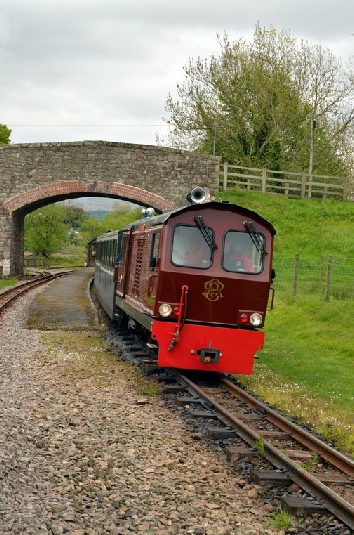
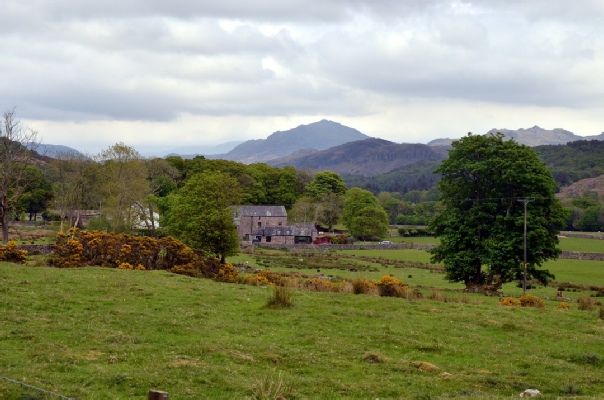
After leaving Ravenglass the line passes through sections of woodland. Note the bluebells on the right -
At Irton Road we passed the 13.50 from Dalegarth which was hauled by diesel locomotive No. 11 Douglas Ferreira.
This B-
As the train approaches Dalegarth good views of the mountains can be seen from the train -
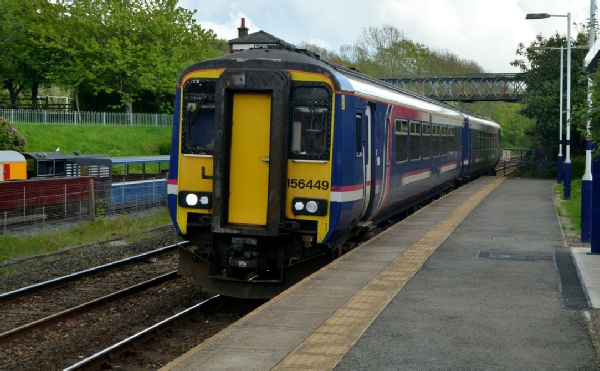
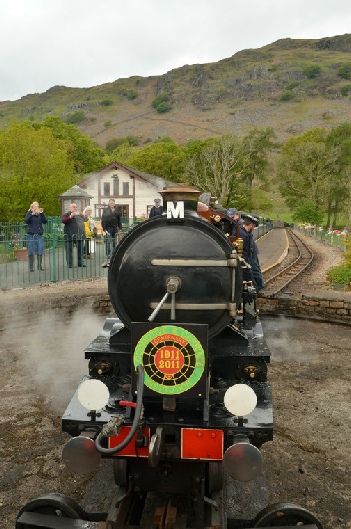
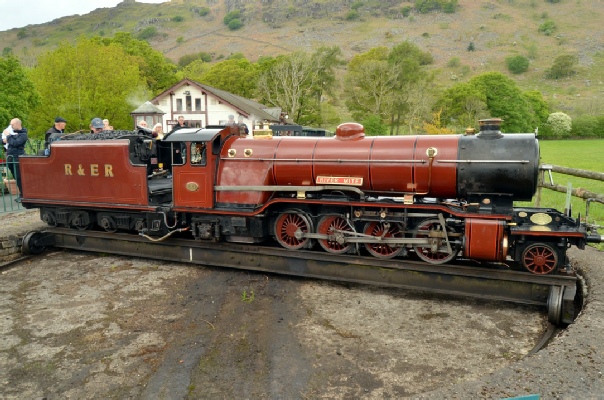
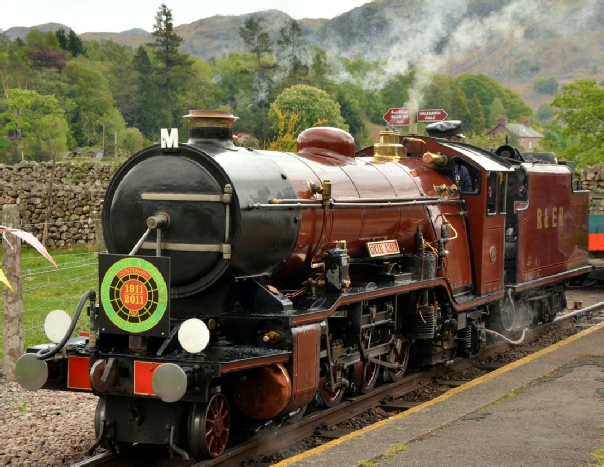
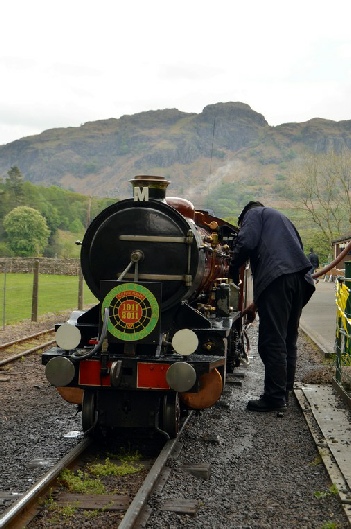
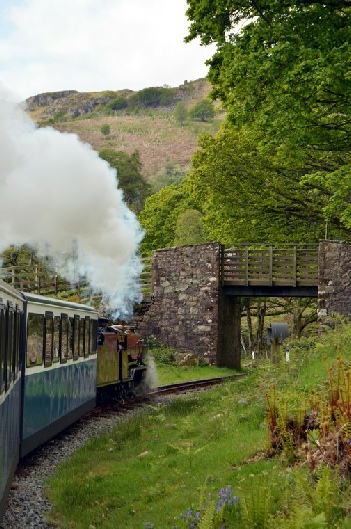
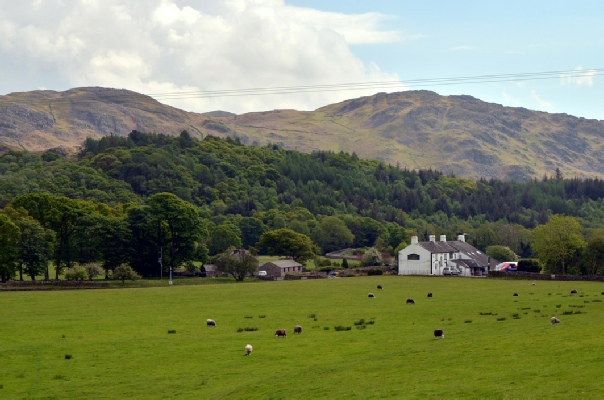
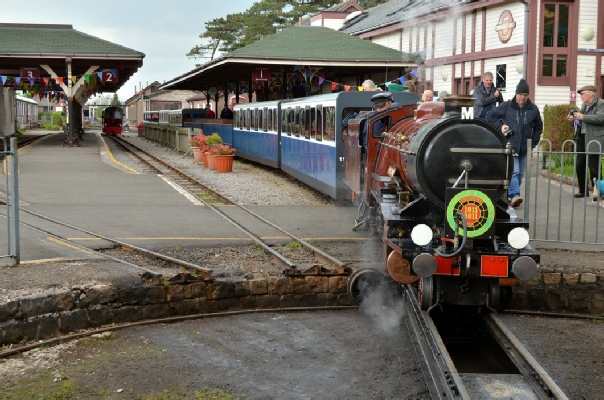
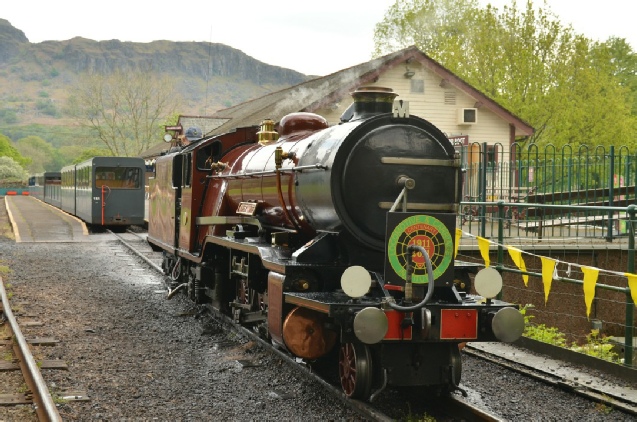
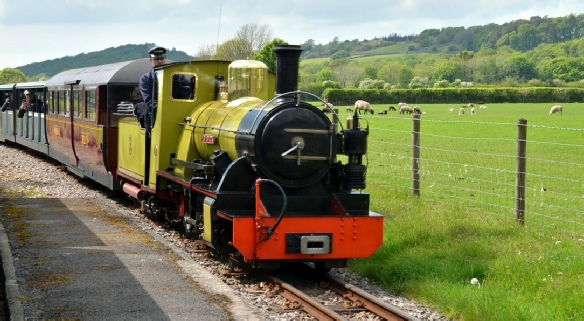
Upon arrival at Dalegarth, River Mitre was uncoupled from the train and moved forward onto the turntable.
The turntable was turned by hand.
River Mitre was designed and built by Clarksons of York and was delivered to the railway in 1966 and entered service in 1967.
River Mitre runs round the train at Dalegarth.
River Mitre (II) was built using the tender frame and coupled wheels from the original 1923 0-
River Mitre backs onto its train at Dalegarth.
River Mitre is a miniature version of a Gresley LNER 2-
River Mitre takes on water.
The engine cost £8,000 to build, paid for by voluntary subscription. It is owned by the R&ER Preservation Society.
We departed on Dalegarth on the 14.50 train to Ravenglass.
The photographer was brave/daft enough to sit in an open carriage -
We again passed through the edge of the Lake District National Park on the way back.
The pub is the King George IV, dating from the 15th Century. The river Esk is just beyond, though not visible in the photo
At Irton Road we passed Northern Rock on the 14.50 from Ravenglass
Northen Rock’s boiler was built by Hunslet in Leedsand other parts were built in the workshops at Ravenglass
For those interested, there was a time for quick pint in the Inn at Ravenglass (great views and tasty pint of Ale) or at the Ratty Arms before catching the 2C33 16.29 from Ravenglass to Carlisle, which was operated by 156 449, still in First ScotRail colours
The Locomotive & Carriage Institution would like to give a big thank you to the staff of the Ravenglass & Eskdale Railway for a very enjoyable day out and a very informative tour around the workshop, engine shed and museum.
If you missed this trip, a visit to the railway is highly recommended, please click: https://ravenglass-
|
The next day we held the AGM for 2019 on the Keighly and Worth Valley railway, for a pictorial account, please click below: |
|
|
A visit to the Keighley & Worth Valley Railway for the AGM 2019, including a guided tour of the engine shed at Haworth. |
|
|
If you have enjoyed this article, you may also be interested in: |
|
|
An narrative account of the visit to the Ravenglass & Eskdale Railway by Peter Lindop |
|